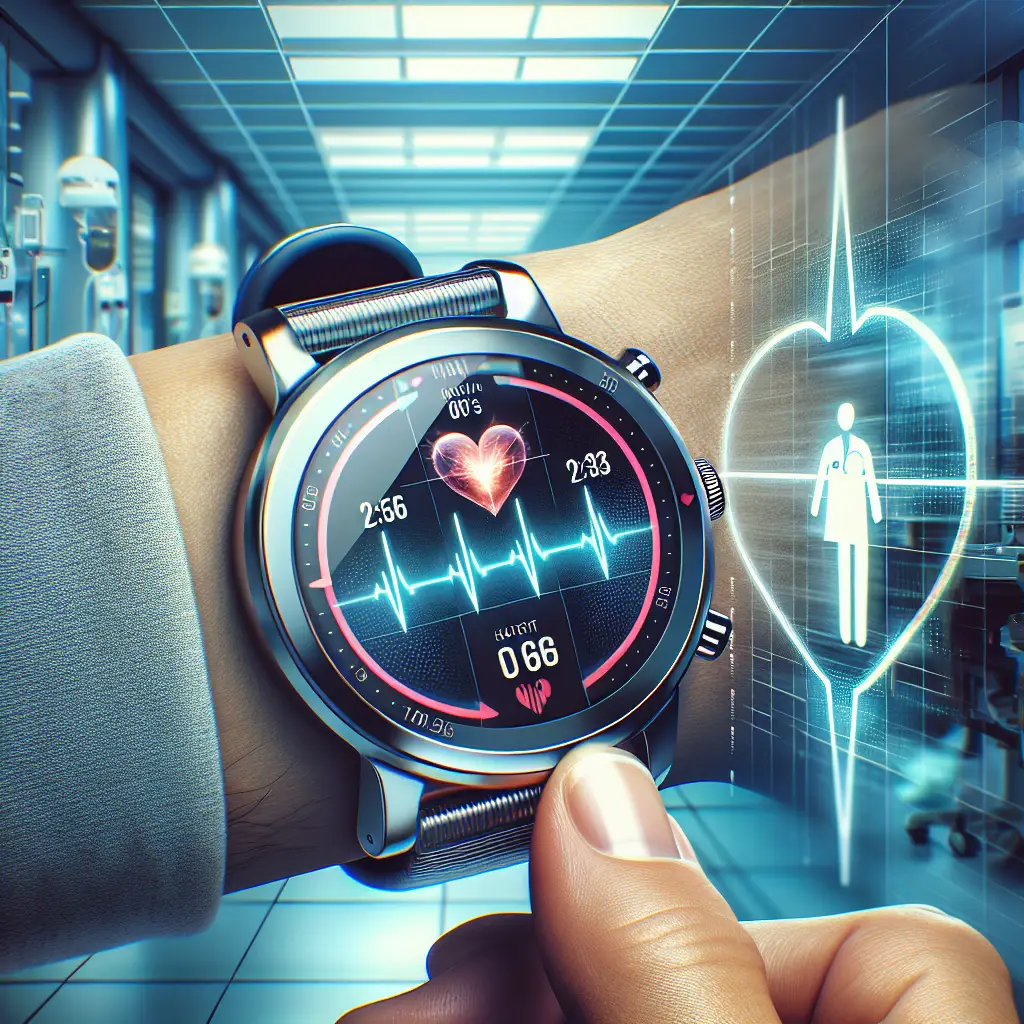Apple Watch, the innovative product of Apple Inc., has been instrumental in revolutionizing the healthcare landscape worldwide. Coupling technology with healthcare, Apple has offered an array of features that enhance the capabilities of physicians and patients, promoting proactive health management. The integration of health tracking, monitoring, and alerting systems in a wearable tech gadget like Apple Watch marks a significant stride towards a healthier and more informed globe.
One of the superlative features of the Apple Watch is its ability to track and monitor critical health data. Heart rate monitoring, fall detection, noise alerts, menstrual cycle tracking, and exercise tracking are a few among the plethora of features that this watch provides. The constant and accurate tracking of these health parameters aids in early detection of potential health issues, allowing for timely intervention and preventing further complications.
The heart rate monitoring feature is especially groundbreaking, offering three distinct measurements – resting, walking, and post-workout. The Watch not only detects irregular heart rhythms but can also identify signs of atrial fibrillation (AFib), a dangerous condition characterized by an irregular and often rapid heart rate. By alerting users to such conditions, the Apple Watch pushes them to seek immediate medical attention, thereby mitigating severe health risks.
The ECG app, approved by the FDA, further propels the Apple Watch into a high-end medical gadget zone. Users can take an ECG anytime, anywhere, and get real-time results. This phenomenal feature can detect even the smallest irregularities in heart rhythms, encouraging users to consult a physician when required. Thus, the ECG app serves as a powerful tool in the early identification and treatment of heart diseases.
Additionally, the Apple Watch excellently tracks physical activity and encourages movement, thereby promoting cardiovascular health. With it, users can set, track, and achieve physical activity goals, while milestones and awards serve as an extra motivation. The Apple Watch also provides reminders to stand and move around if users have been inactive for too long, contributing towards a healthier lifestyle.
The fall detection feature is another healthcare advancement that the Apple Watch brings to its users. It uses a custom algorithm and gyroscope to detect when the user has taken a hard fall. If the watch senses immobility for 60 seconds after the fall, it draws on the emergency services and sends a message with the user’s location to their emergency contacts. This feature holds immense potential, especially for the elderly and people living alone, reducing the risk of undetected and untreated fall injuries.
Understanding the risks linked with loud environments, Apple Watch’s noise alerts feature warns users when the sounds around them may harm their hearing. Noise alerts are not just about maintaining auditory health; they also reduce the risk of long-term mental health problems associated with constant exposure to noise.
Moreover, Apple has successfully integrated women’s health into the watch’s health features, a sector often overlooked in technology. The cycle tracking feature allows women to log important information about their menstrual cycle and see predicted timing for their next period and fertile window, which can be instrumental in family planning and understanding overall reproductive health.
In terms of mental health, the Apple Watch offers a Breathe app that encourages users to take time for mindfulness. It sends reminders to take a deep breath, which is especially valuable in this fast-paced world where mental health issues are steadily on the rise. Additionally, it features a sleep app that tracks sleep patterns, helping users understand their sleeping behavior and improve sleep quality.
Emphasizing proactive health care, ResearchKit and CareKit, enabled by Apple Watch, empower medical researchers and developers to gather and share significant health data. With the patient’s consent, researchers can collect data regarding epilepsy, Parkinson’s disease, and post-surgical progress directly from the Apple Watch, thereby having a pool of real-world evidence to support clinical trials. The CareKit, on the other hand, helps users understand and track their own health more proficiently.
Apple’s release of iOS 13 also saw the incorporation of a health records feature that allows just about 300 health institutions to share their health records with Apple Watch users. This makes access to and control over personal health records much easier for patients.
Privacy, a significant concern in healthcare technology, is addressed effectively by Apple. While the Apple Watch captures a wide array of health data, each user retains control over their data. They can choose what to share and with whom, ensuring that privacy is not compromised.
Undeniably, the Apple Watch has been influential in transforming the healthcare landscape. By offering not just one, but many health-related features in a small piece of wearable technology, it aids in bringing healthcare closer to the public while empowering them to take charge of their own health. In essence, the Apple Watch is effectively driving a shift from reactive to proactive healthcare.
In the ever-evolving technological landscape, the potential of the Apple Watch has just begun to be untapped. Future iterations will undoubtedly bring more powerful health features, which will not only be limited to tracking and monitoring but will also aid in diagnosing and treating ailments. We are indeed standing at the cusp of a healthcare revolution propelled by wearable technology like Apple Watch.
Share this content:

